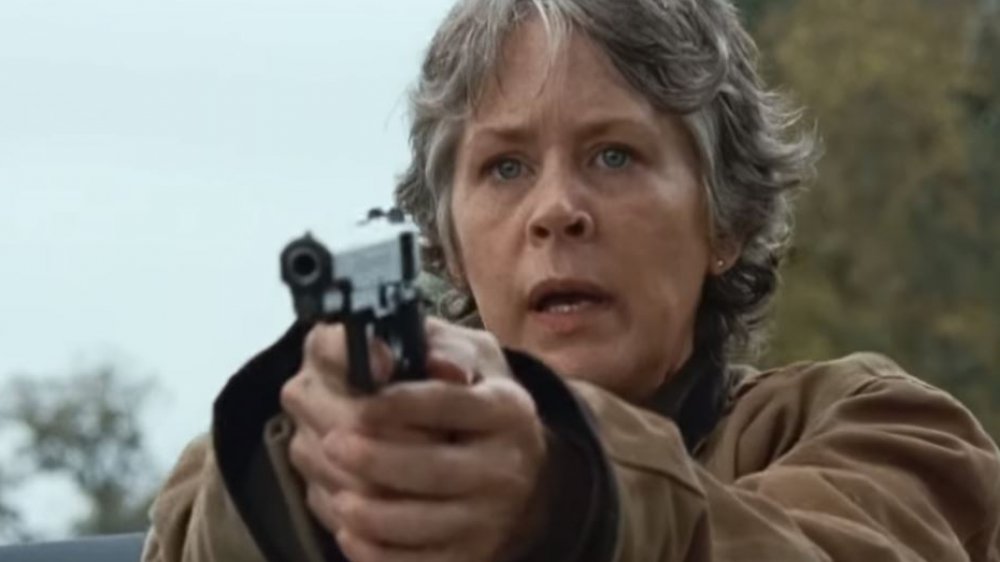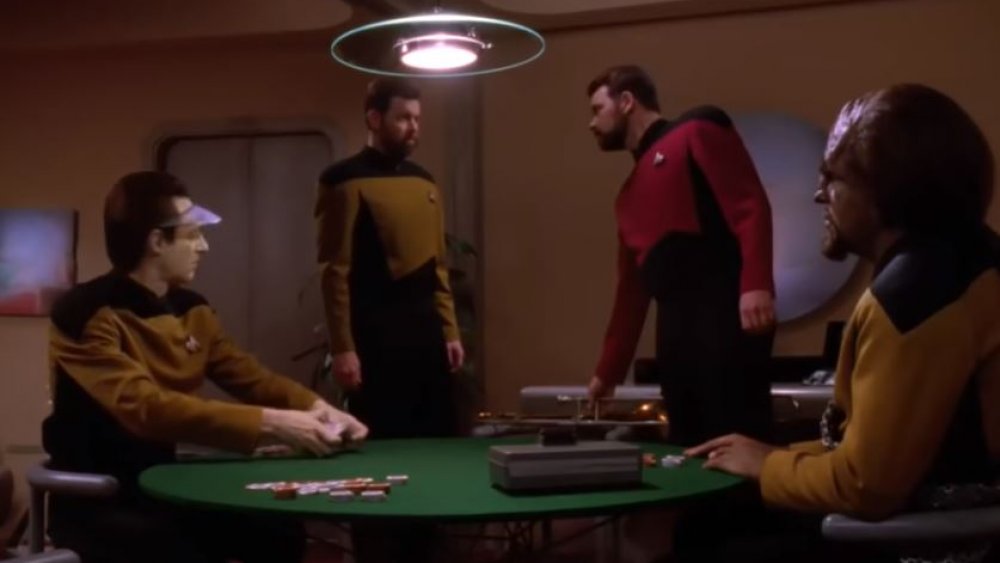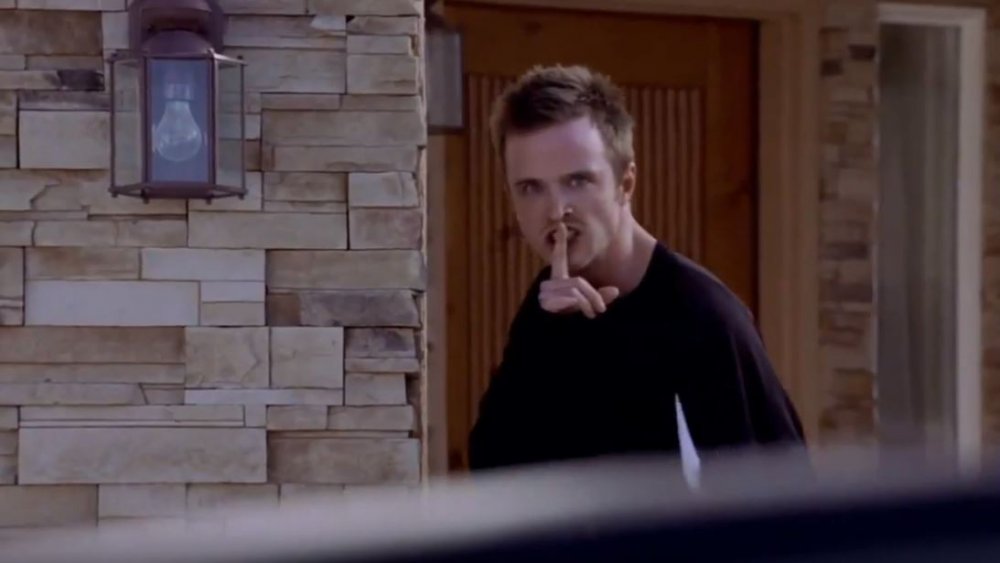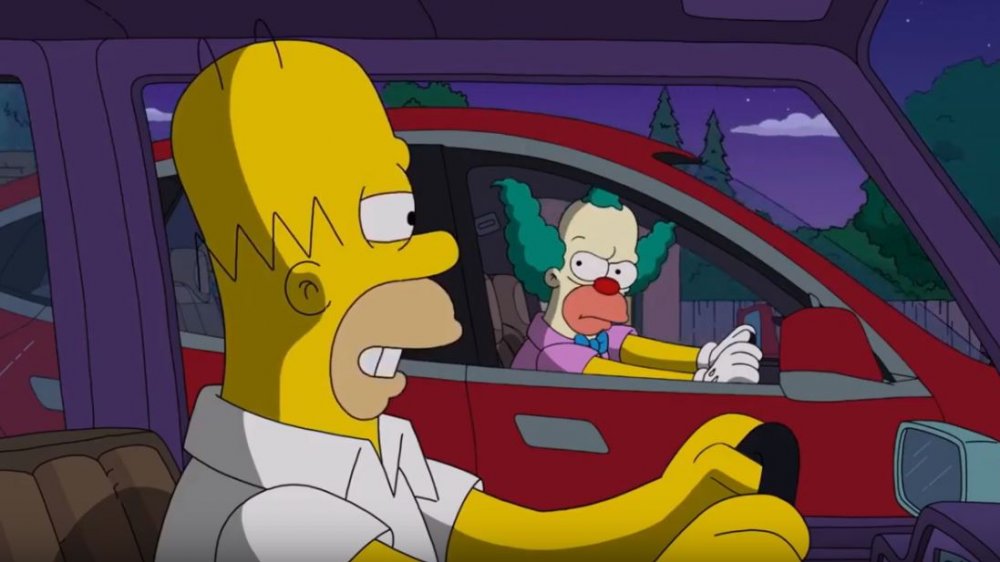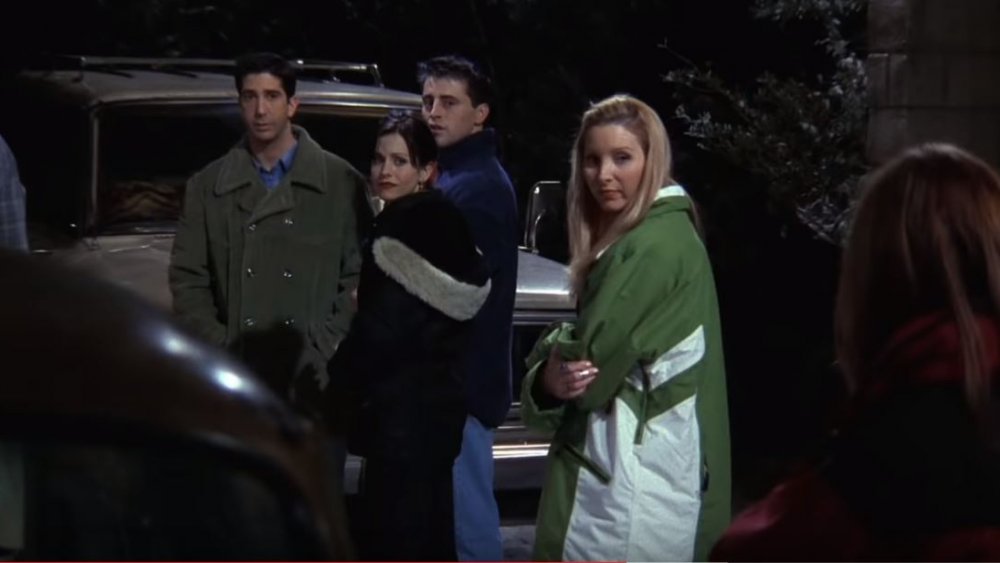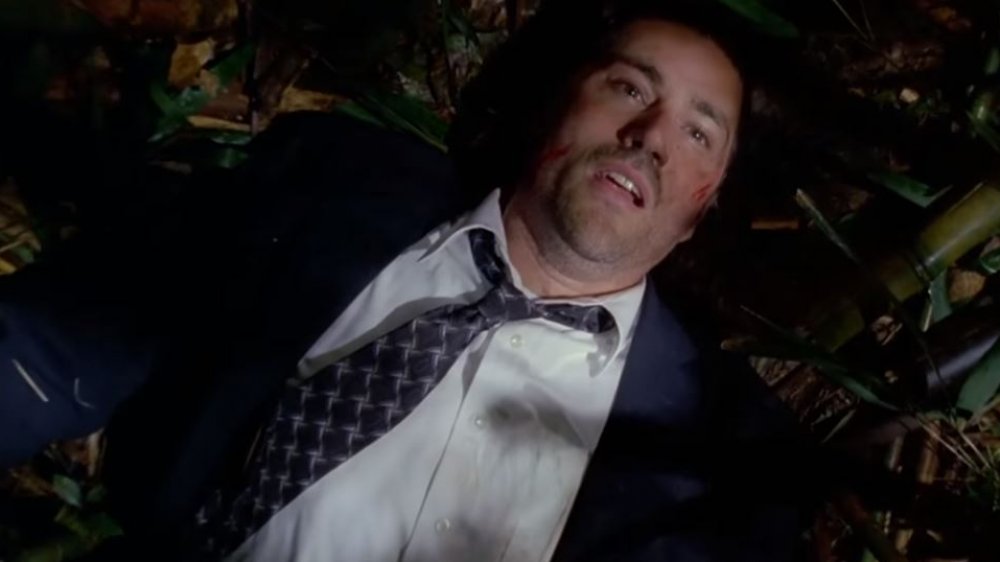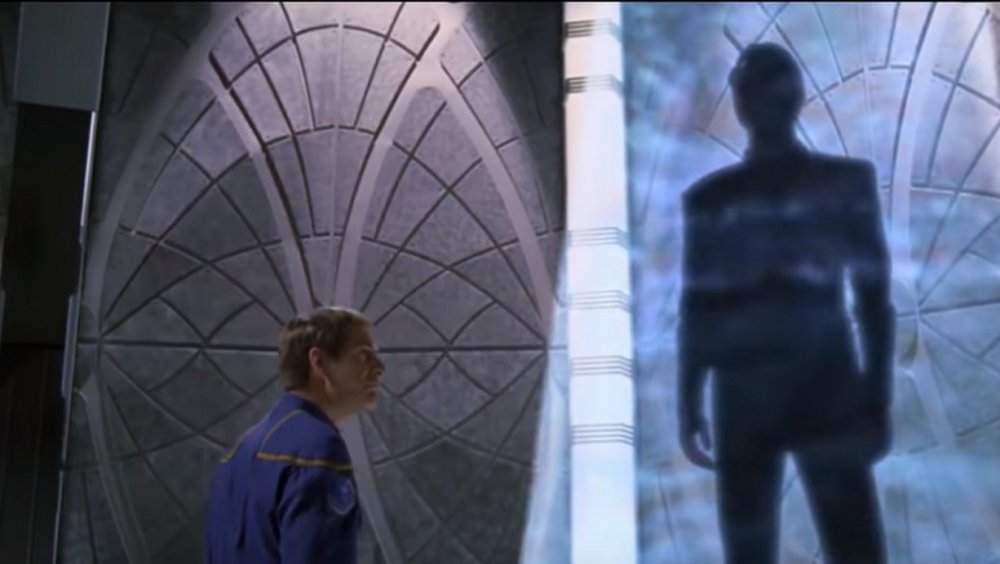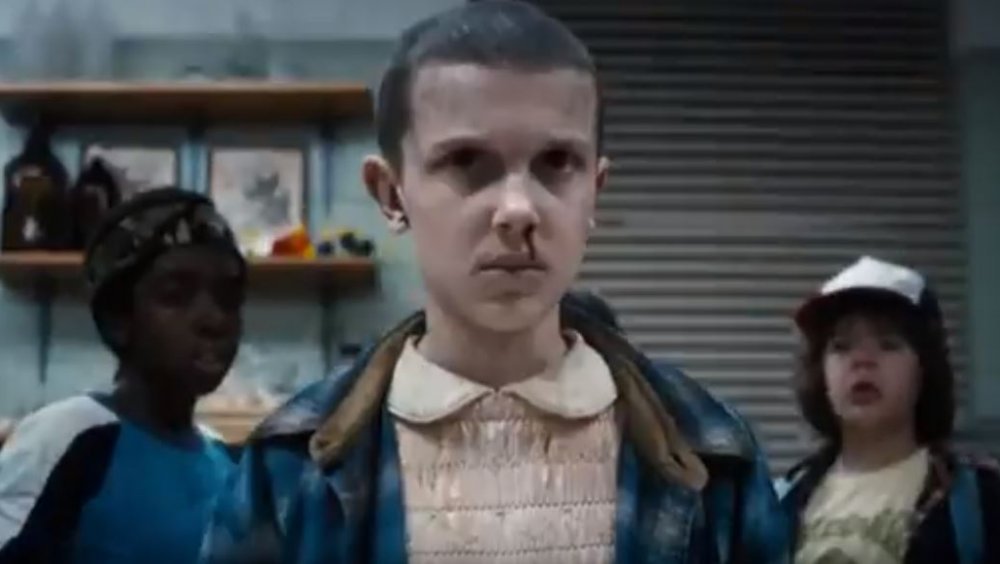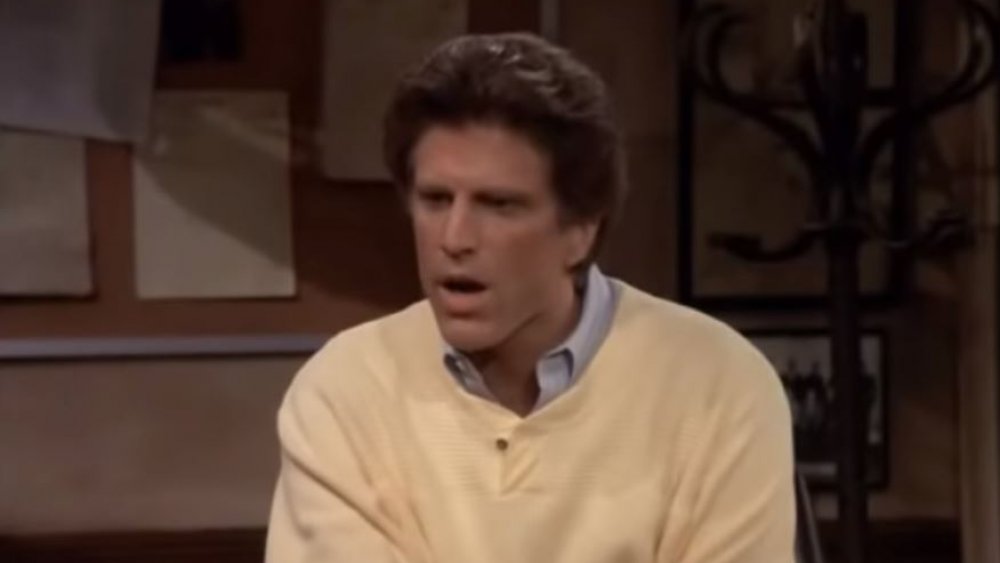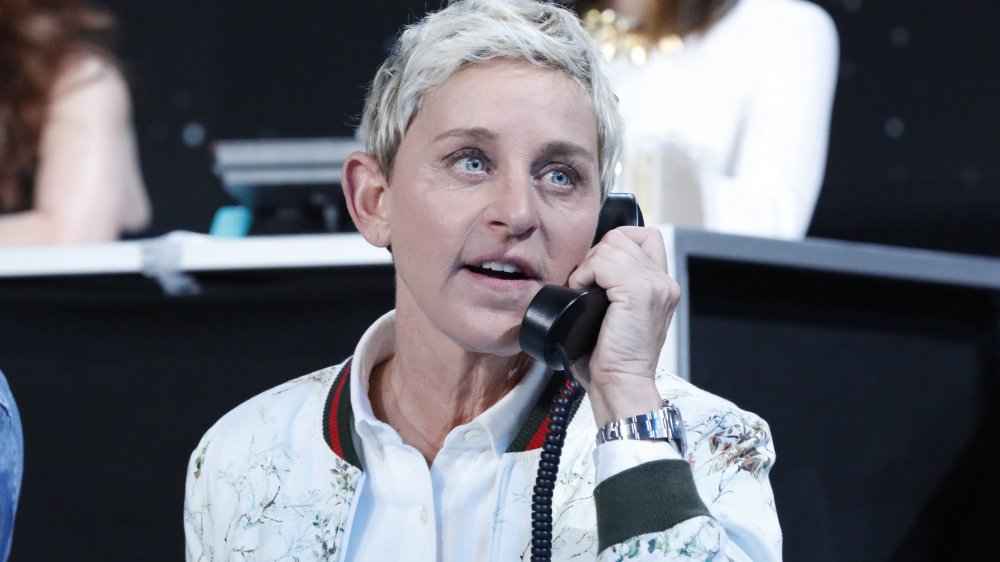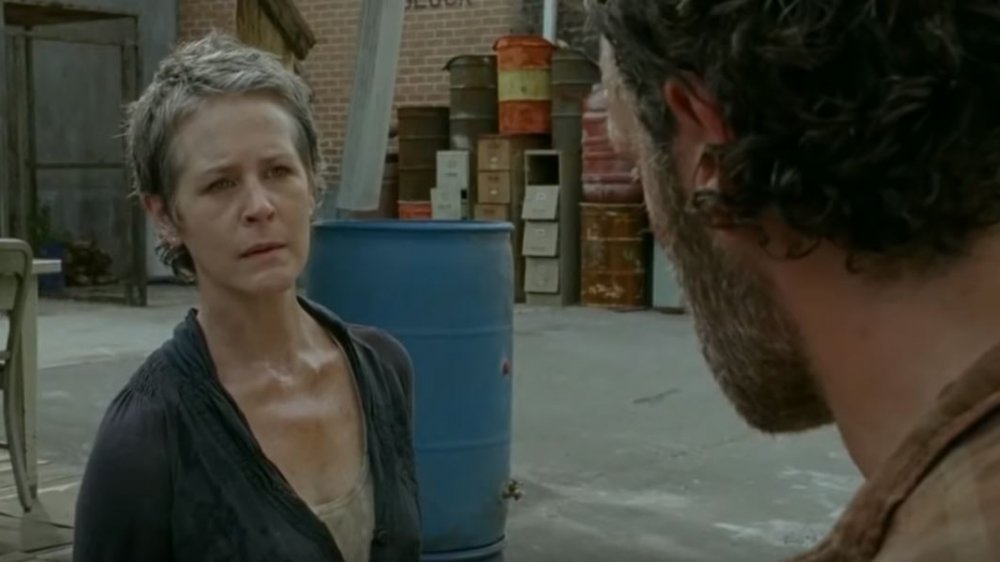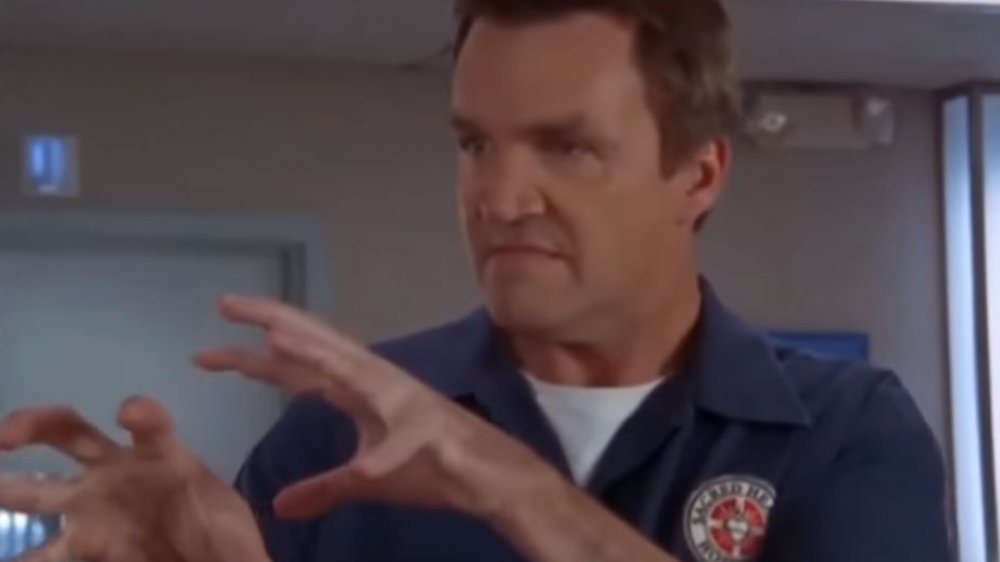Canceled TV Plot Twists That Would've Changed Everything
There's nothing that gets TV audiences fired up like a killer plot twist. The impact ripples through every episode of the show, past and present, as these crazy left-field turns alter everything you thought you knew. Twitter explodes. The water cooler buzzes. Online publications start running think pieces, while Redditors debate the clues, and audiences stare at the screen for days, unable to close their gaping jaws.
Crafting a plot twist is always a risk, but if done well, it pays off in spades. Sometimes, though, TV showrunners get a little more daring than their producers are willing to go. Other times, a surprise that was planned in the scripting stage feels awkward on camera, or simply gets forgotten along the way. Regardless, many popular television programs have built toward plot twists that ended up being canceled, rewritten, or avoided, and these are the ones that would have drastically altered some of your favorite shows.
The Next Generation of Riker
You don't find many characters more loyal, trusted, or admirable than William Thomas Riker, the first officer of the Enterprise-D on Star Trek: The Next Generation. For a career Starfleet man, though, Riker seemed awfully wary of taking over his own ship. Every time it was offered, he refused.
Why? Good question, and it's one that Star Trek fans are still debating. Behind the scenes, the problem was that losing Riker to another ship would leave a gap in the Enterprise crew. To solve this problem, Geek Tyrant reports that the Next Generation writers decided to have Riker get cloned in a transporter accident: this clone, named "Tom" Riker, was written as a reckless Wolverine type, as opposed to Riker's dutiful Cyclops shtick. In the original story outline, Will was going to bite the bullet (er, phaser) and in his memory, Tom would've signed up for a lower ranking position on the Enterprise (ops officer), from that point forward.
Crazy? Oh yeah. Sure, both Rikers were played by the same dude, but those characters weren't ... well, the same dude. The personality differences between Tom and Will, to say nothing of however the Deanna Troi romance might've played out, are wild to consider. However, by the time that Tom's clone saga reached the air, in an episode titled "Second Chances," the writers had abandoned their whole kill-and-replace motive. Instead, they had Tom get assigned to another ship, and kept the old Will in place, forevermore.
Jesse Pinkman was too cool to kill
Walter White might've been the protagonist of Breaking Bad, a series that chronicled his descent from high school chemistry teacher to drug kingpin. The show's heart, though, was Jesse Pinkman, as the 2019 release of El Camino: A Breaking Bad Movie proves.
A troubled kid who became a troubled adult, the character played by Aaron Paul swiftly gained so much love from everybody that — in fact — it saved Jesse's life. No, really. According to New York Magazine, showrunner Vince Gilligan originated intended to kill off Jesse at the conclusion of Breaking Bad's first season, in some gruesome manner that was going to make Walt go off the deep end. How deep? According to the Wrap, Jesse's murderer would have been kidnapped by Walt. From there, Walt would've shackled the bad guy in a basement, rigged him up to a shotgun-suicide-contraption, and then slowly cut off one piece of the dude's body, every day, trying to make him kill himself. Jigsaw, much? To make matters worse, a double-twist would've seen poor Walt Jr. waltz into this freak show basement, try to give the guy water ... and then get killed by the shotgun contraption. Jeez!
Aside from the fact that this would've taken both of Walt's "sons" off the table early on, it's hard to imagine how these twists would've impacted Breaking Bad as a whole. If Walt were already cutting off body parts back in season two, how much lower could he descend from there?
Krusty the Clown has got a big ol' secret
Take a long, hard look at Homer Simpson. Done? Now, take an equally long look at Bart's big hero, Krusty the Clown. Have you ever noticed that the two characters look ... well, almost identical? And no, not just because of the jaundice-colored skin.
This is no accident. As reported by Comic Book Resources, the original concept behind Krusty the Clown was that he was supposed to be Homer in disguise, moonlighting as a popular TV clown to pay the bills, without telling his family. Thus, the irony would've been that while Bart was always disrespectful and insubordinate with his dad, he unknowingly idolized Homer's secret TV alter ego ... presumably making Homer feel really weird about the whole thing. Now, while the seeds were planted for this twist in early episodes, the overall complications of it felt too strenuous for creator Matt Groening, so the storyline was dropped ... and hey, honestly, Homer being clever enough to hide a secret clown identity? That would've made The Simpsons into a radically different show.
That said, the resemblance between Homer and Krusty remains unchanged, as does the central joke (or tragedy?) of Bart being obsessed with a fella who looks the same as his annoying dad.
Friends (be movin')
There is no Friends without New York City. From Central Perk to the whole "wrong airport" kerfuffle, it's hard to imagine Rachel, Ross, Monica, and the gang hanging out anywhere but the Big Apple, even though there's no way in hell that those guys could've ever afforded such a luxury-sized apartment, even with rent control. As Chandler might say, could that be any more unrealistic?
Fantasy aside, it's shocking to realize that back in the show's fifth season, according to the Independent, the show's writers tried to migrate everybody from Manhattan to ... uh, Minnesota? Yeah. Basically, Chandler's oh-so-mysterious job would've unexpectedly transferred him to the land of 10,000 lakes, much to his chagrin. Over the course of a half-season, the other friends would have slowly followed him there, enticed by the lower rents (well, duh) and slower pace of life. The writers even wanted to have the Friends opening sequence re-shot around an icy fountain, to represent the new Minnesota location. Now, whether this bizarre change of setting would have stuck around is a question for another day, but the twist got canceled by Friends co-creator David Crane, who thought it was insane. Can't argue with that. For what it's worth, somebody in the writer's room never quite gave up on this silly idea, and Chandler did end up being briefly transferred to Tulsa, Oklahoma for part of the ninth season.
Jack was supposed to be a fakeout hero on Lost, not the real deal
Lost is an anomaly. It reshaped the television landscape, forever, in a way that no subsequent TV show has really come close to. However, for a series filled with so many bizarre, fascinating, and quirky characters that will forever hold a place in entertainment history — from the courageous Sayid to the crafty Ben Linus — it might seem a bit odd that the central star ends up being a prototypical hero like Dr. Jack Shephard, as played by Matthew Fox. Yes, yes, Jack ends up being way more complex, troubled, and interesting as the show goes on. But c'mon, at the beginning? He might as well be wearing a T-shirt that says, "Classical fearless leader, right here!"
Well, as it happens, Jack was designed this way for a reason: he was supposed to die in the first episode. As Syfy explains, Jack's personality and leadership were crafted to lull the audience into a false sense of security. His death, midway through the pilot, would've made the point that nobody was safe. Think of it as the classic Psycho twist, but on a deserted island instead of a shower. From there, Kate would've been the one to lead the other survivors, though her story (at the time) involved something regarding a lost husband. Anyway, it's hard to imagine how this would've played out, since Jack's survival went on to guide the entire course of the series.
Who was that "future guy" on Star Trek: Enterprise?
Love it or hate it, the prequel series Star Trek: Enterprise had its work cut out from day one: set in a pre-Kirk era, wherein viewers are fully aware that society is only a few centuries away from utopian marvels, how do you keep any dramatic tension going? To that end, as the A.V. Club points out, the producers pushed Enterprise's writers to include a "Temporal Cold War" subplot, wherein various 31st century factions were mucking about in the past, trying to ruin the timeline ... you know, unless the Enterprise crew, led by Scott Bakula's Captain Jonathan Archer, made exactly the right choices, every time. At the center of this narrative was a faceless time traveler, nicknamed "Future Guy" by the internet, who appeared to be leading the villainous Suliban toward unclear goals.
Who was Future Guy? It was never revealed. As the series continued, the Temporal Cold War storyline dropped off the face of the map, largely because the creators found it ""strangulating," according to Gizmodo. That said, in 2012, Enterprise co-creator Brannon Braga revealed on Twitter that Future Guy was intended to be a future version of Captain Archer, manipulating his own past. Why? In a subsequent tweet, Braga added that "[Future] Archer was trying to correct history. He was pure in his own mind."
Sure, and so was a dude named Khan Noonien Singh ...
Stranger Things almost made two big mistakes
A few years before the Stranger Things third season finale got people fired up with debates about whether a certain character is dead or not (hey, no spoilers!), there was the first season. During development, well before anyone knew that this 1980s-tinged series was going to be a phenomenon, two of the show's biggest heroes had targets painted on their backs, according to Mental Floss. The first one, of course, was Eleven. The telekinetic girl's mysterious disappearance at the conclusion of season one, where she took down the Demogorgon in a suitably superheroic fashion, was originally written as a full-on sacrifice. However, once the showrunners figured out that another season was in the cards, they (rightfully) realized that there would be no point in going on without Eleven. Hence, her death scene became a "vanishing" scene, instead, with no body.
The other, perhaps more surprising twist would've been the death of Steve "The Hair" Harrington, also in season one. If you recall, Steve was kind of a jerk back then, so tears probably wouldn't have been shed. By season two, though, his character growth and friendship with Dustin turned him into a beloved character, so it's a good thing he didn't get put under.
Not the most Cheer(s)-ful episode
Cheers, which starred Ted Danson and Shelley Long as TV's all-time most famous on-again, off-again couple, was intended to be a funny show. You know what's not funny? Life-threatening illness. That's why back in 1988, according to an archived issue of the Vindicator, the writers ran into issues when they wanted to have their season finale handle the AIDS epidemic, through Sam. This episode made it all the way to rehearsals, in fact, before getting pulled for a few reasons: one, a strike by the Writers Guild of America put the brakes on lots of TV productions, and two, the stark seriousness of whole AIDS-storyline was making everyone nervous.
In an alternate timeline, though, how would this episode have played out? As explained by Mental Floss, Sam would have discovered that his ex-girlfriend had tested positive for HIV, and the season would have ended on a cliffhanger, leaving audiences to wonder, for an entire summer, whether he had also contracted it. Culturally, this could have been a big moment, but it definitely would've changed the whole course of the series.
The Ellen twist that almost got replaced by a much worse twist
If you watched TV in the 90s, and you recall Ellen DeGeneres' ABC sitcom Ellen, there's one part that sticks out above all others: that big scene in "The Puppy Episode," which aired on April 30th, 1997, wherein Ellen — both the character and the actress — came out as gay. Now, on today's television landscape, as the Daily Beast points out, such a twist would've never been controversial. Back then, though, it was groundbreaking, bold, and even caused advertisers to pull out of the show. Put bluntly, "The Puppy Episode" was a cultural game changer.
Not surprisingly, when DeGeneres first pitched the big moment, studio executives balked. Disney producer Michael Eisner, according to NewNowNext, seems to have been the one to suggest replacing Ellen's dramatic moment with a cheap cop-out twist, wherein Ellen would've adopted a puppy ... instead of, you know, being true to herself. Needless to say, Ellen and the writers rejected this dumb dog adoption suggestion, but kept the episode title the same, as a way to preserve the episode's secrecy while also telling off all the overcautious and homophobic executives out there.
Carol outlives The (Walking) Dead
AMC's The Walking Dead was inspired by Robert Kirkman and Tony Moore's comic book, The Walking Dead. However, the two entities take radically different courses, particularly when it comes to the heroes themselves. Perhaps no character has been more transformed than Carol Peletier, as portrayed by Melissa McBride: while the comic book Carol is a weak link who gets killed off early on, as explained by Forbes, the TV Carol is a battle-hardened survivor of both domestic abuse and a zombie apocalypse. As the series goes on, Carol gets stronger and stronger, with her most badass, transformative, and sometimes heartbreaking moments all occurring in later seasons.
However, one planned twist could have destroyed Carol's character development, midstream: she was originally fated to die in season three, right as the survivors were getting situated in the prison. Say whaaaa? Carol's advocate on the writing team, according to Insider, was Scott Gimple, who says he was "dead set" against this development. Gimple loved Carol, and he wanted to follow the story of an abuse survivor becoming the hero, and then struggling with her newfound power in a human, relatable way. Clearly, he was right, considering that Carol has become such a fan-favorite part of the series.
So, what happened? The crew swapped deaths, and they had T-Dog bite it ... er, get bit, in Carol's place.
The Janitor on Scrubs always seemed a bit unusual ... and there's a reason
Scrubs was a wacky series, but with a big heart. It's also the TV show that most accurately depicted the medical profession, where nurses do much of the heavy lifting, the doctors have to fight for a patient's rights against budget-friendly bosses, and there's no cranky genius with a cane getting away with constant lawlessness.
However, the one part of Scrubs that is blatantly unrealistic can be found in the character of the Janitor. This sadistic figure, played with aplomb by Neil Flynn, seems to spend his entire life doing nothing but tormenting J.D. in various evil ways, while neglecting his paid duties, and largely eschewing any kind of personal life. How does he not get fired? Why doesn't he face disciplinary actions, at least? It's a mystery.
The truth is, according to Mental Floss, the Janitor was originally written to be J.D.'s dark imaginary friend. That's why, in the first season — if you pay close attention — he never interacts with anyone but J.D., ever. Yikes! This Fight Club-style twist was canned by season two, according to Zach Braff, once everyone realized Flynn's hilarious ad-libbing abilities, and decided to spread the wealth to other cast members. Sounds like J.D. lucked out.
